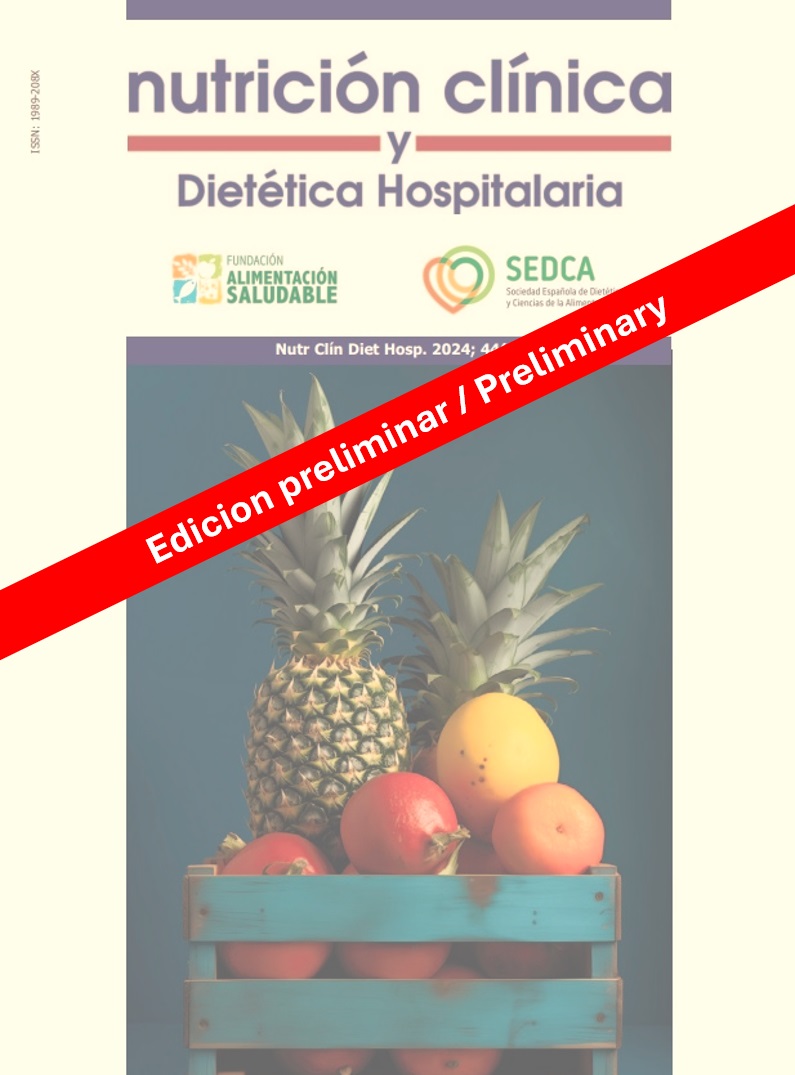Estado metabólico como predictor de enfermedad cardiovascular en una cohorte laboral: más allá del índice de masa corporal.
DOI:
https://doi.org/10.12873/451bustamantePalabras clave:
Enfermedades cardiovasculares, Síndrome metabólico, índice de masa corporal, obesidad metabólicamente benigna, salud laboral, factores de riesgoResumen
Introducción: Las enfermedades cardiovasculares (ECV) son una causa principal de morbimortalidad global. Recientes investigaciones sugieren que el estado metabólico podría ser un mejor predictor del riesgo cardiovascular que el índice de masa corporal (IMC) por sí solo.
Objetivo: Evaluar los diferentes fenotipos metabólicos y el riesgo de desarrollar ECV en una cohorte de trabajadores.
Metodología: Estudio de cohorte observacional analítico retrospectivo con 4,158 trabajadores seguidos durante un máximo de 8 años. La variable respuesta fue la presencia de ECV, que se definió como la presencia del diagnóstico de accidente cerebro vascular o infarto por autorreporte. La combinación del estado metabólico y el IMC resultó en seis fenotipos: normopeso metabólicamente saludable (NMS), normopeso metabólicamente no saludable (NMNS), sobrepeso metabólicamente saludable (OBMSW), sobrepeso metabólicamente no saludable (OBMNSW), obesidad metabólicamente saludable (OBMS) y obesidad metabólicamente no saludable (OBMNS). Se calculó la incidencia de ECV y se utilizaron modelos de regresión de Cox para estimar los hazard ratios (HR) ajustados.
Resultados: La incidencia global de ECV fue de 5.64 por 1000 personas-año. Comparado con el fenotipo NMS, los fenotipos metabólicamente no saludables mostraron un riesgo significativamente mayor de ECV: NMNS (HRa: 5.19, IC 95%: 1.29-20.84), OBMNSW (HRa: 7.07, IC 95%: 2.40-20.86), y OBMNS (HRa: 7.35, IC 95%: 2.43-22.21).
Discusión: Los hallazgos subrayan la importancia del estado metabólico, independientemente del IMC, en el desarrollo del ECV. Esto tiene implicaciones significativas para la práctica clínica y la salud pública, sugiriendo la necesidad de implementar evaluaciones metabólicas comprehensivas y estrategias de prevención personalizadas en todas las categorías de IMC, especialmente en el ámbito laboral.
Referencias
Roth GA, Mensah GA, Johnson CO, Addolorato G, Ammirati E, Baddour LM, et al. Global Burden of Cardiovascular Diseases and Risk Factors, 1990-2019: Update From the GBD 2019 Study. J Am Coll Cardiol. 2020;76(25):2982–3021. doi:10.1016/j.jacc.2020.11.010
Visseren FLJ, Mach F, Smulders YM, Carballo D, Koskinas KC, Bäck M, et al. 2021 ESC Guidelines on cardiovascular disease prevention in clinical practice. Eur Heart J. 2021;42(34):3227–337. doi:10.1093/eurheartj/ehab484
Stefan N, Schick F, Häring H-U. Causes, Characteristics, and Consequences of Metabolically Unhealthy Normal Weight in Humans. Cell Metab. 2017;26(2):292–300. doi:10.1016/j.cmet.2017.07.008
Lavie CJ, Laddu D, Arena R, Ortega FB, Alpert MA, Kushner RF. Healthy Weight and Obesity Prevention: JACC Health Promotion Series. J Am Coll Cardiol. 2018;72(13):1506–31. doi:10.1016/j.jacc.2018.08.1037
Blüher M. Metabolically Healthy Obesity. Endocr Rev. 2020;41(3):bnaa004. doi:10.1210/endrev/bnaa004
Antonopoulos AS, Tousoulis D. The molecular mechanisms of obesity paradox. Cardiovasc Res. 2017;113(9):1074–86. doi:10.1093/cvr/cvx106
Eckel N, Li Y, Kuxhaus O, Stefan N, Hu FB, Schulze MB. Transition from metabolic healthy to unhealthy phenotypes and association with cardiovascular disease risk across BMI categories in 90 257 women (the Nurses’ Health Study): 30 year follow-up from a prospective cohort study. Lancet Diabetes Endocrinol. 2018;6(9):714–24. doi:10.1016/S2213-8587(18)30137-2
Goetzel RZ, Pei X, Tabrizi MJ, Henke RM, Kowlessar N, Nelson CF, et al. Ten modifiable health risk factors are linked to more than one-fifth of employer-employee health care spending. Health Aff Proj Hope. 2012;31(11):2474–84. doi:10.1377/hlthaff.2011.0819
Arena R, Guazzi M, Lianov L, Whitsel L, Berra K, Lavie CJ, et al. Healthy Lifestyle Interventions to Combat Noncommunicable Disease—A Novel Nonhierarchical Connectivity Model for Key Stakeholders: A Policy Statement From the American Heart Association, European Society of Cardiology, European Association for Cardiovascular Prevention and Rehabilitation, and American College of Preventive Medicine. Mayo Clin Proc. 2015;90(8):1082–103. doi:10.1016/j.mayocp.2015.05.001
von Elm E, Altman DG, Egger M, Pocock SJ, Gøtzsche PC, Vandenbroucke JP. Strengthening the reporting of observational studies in epidemiology (STROBE) statement: guidelines for reporting observational studies. BMJ. 2007;335(7624):806–8. doi:10.1136/bmj.39335.541782.AD
Gómez-Zorita S, Queralt M, Vicente MA, González M, Portillo MP. Metabolically healthy obesity and metabolically obese normal weight: a review. J Physiol Biochem. 2021;77(1):175–89. doi:10.1007/s13105-020-00781-x
Pluta W, Dudzińska W, Lubkowska A. Metabolic Obesity in People with Normal Body Weight (MONW)—Review of Diagnostic Criteria. Int J Environ Res Public Health. 2022;19(2):624. doi:10.3390/ijerph19020624
Vera Ponce VJ. Database Ocupacional [Internet]. figshare; 2024 [citado el 24 de septiembre de 2024]. p. 8073963 Bytes. doi:10.6084/M9.FIGSHARE.27098296
Caleyachetty R, Thomas GN, Toulis KA, Mohammed N, Gokhale KM, Balachandran K, et al. Metabolically Healthy Obese and Incident Cardiovascular Disease Events Among 3.5 Million Men and Women. J Am Coll Cardiol. 2017;70(12):1429–37. doi:10.1016/j.jacc.2017.07.763
Eckel N, Meidtner K, Kalle-Uhlmann T, Stefan N, Schulze MB. Metabolically healthy obesity and cardiovascular events: A systematic review and meta-analysis. Eur J Prev Cardiol. 2016;23(9):956–66. doi:10.1177/2047487315623884
Mongraw-Chaffin M, Foster MC, Kalyani RR, Vaidya D, Burke GL, Woodward M, et al. Obesity Severity and Duration Are Associated With Incident Metabolic Syndrome: Evidence Against Metabolically Healthy Obesity From the Multi-Ethnic Study of Atherosclerosis. J Clin Endocrinol Metab. 2016;101(11):4117–24. doi:10.1210/jc.2016-2460
Mechanick JI, Farkouh ME, Newman JD, Garvey WT. Cardiometabolic-Based Chronic Disease, Addressing Knowledge and Clinical Practice Gaps: JACC State-of-the-Art Review. J Am Coll Cardiol. 2020;75(5):539–55. doi:10.1016/j.jacc.2019.11.046
Neeland IJ, Ross R, Després J-P, Matsuzawa Y, Yamashita S, Shai I, et al. Visceral and ectopic fat, atherosclerosis, and cardiometabolic disease: a position statement. Lancet Diabetes Endocrinol. 2019;7(9):715–25. doi:10.1016/S2213-8587(19)30084-1
Bhaskaran K, Dos-Santos-Silva I, Leon DA, Douglas IJ, Smeeth L. Association of BMI with overall and cause-specific mortality: a population-based cohort study of 3·6 million adults in the UK. Lancet Diabetes Endocrinol. 2018;6(12):944–53. doi:10.1016/S2213-8587(18)30288-2
Stefan N, Häring H-U, Hu FB, Schulze MB. Metabolically healthy obesity: epidemiology, mechanisms, and clinical implications. Lancet Diabetes Endocrinol. 2013;1(2):152–62. doi:10.1016/S2213-8587(13)70062-7
Sorensen G, McLellan D, Dennerlein JT, Pronk NP, Allen JD, Boden LI, et al. Integration of health protection and health promotion: rationale, indicators, and metrics. J Occup Environ Med. 2013;55(12 Suppl): S12-18. doi:10.1097/JOM.0000000000000032
Pérez Coaguila J. Tendencias del empleo formal privado de Perú: un análisis con planilla electrónica (2008-2018). Rev Latinoam Desarro Económico. 2019;(32):33–55.
Descargas
Publicado
Licencia
Derechos de autor 2025 Nutrición Clínica y Dietética Hospitalaria

Esta obra está bajo una licencia internacional Creative Commons Atribución-NoComercial-SinDerivadas 4.0.
Los lectores pueden utilizar los textos publicados de acuerdo con la definición BOAI (Budapest Open Access Initiative)



